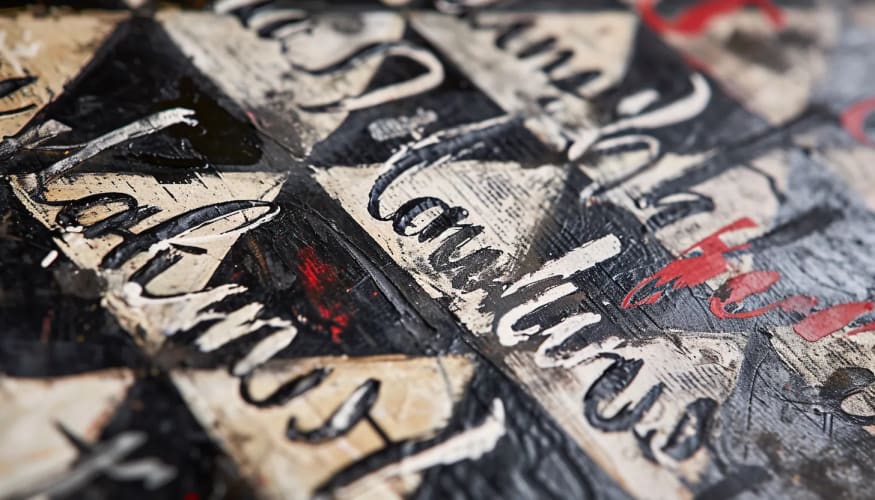For an interview with Ndiaga Samb and a selection of his games from 1991-1998, I can wholeheartedly refer to Dammen 131/132 by Ton Sijbrands. However, I would like to take a moment to revisit this period, as Senegal had three golden assets at the time.
The first of these, Bassirou Ba, participated four times in the renowned Suikertoernooi between 1973 and 1976. In his first appearance, he won the B-group and would go on to compete in the main group in the following years, demonstrating his talent.
After that, he disappeared from the scene for a while.
Between 1980 and 1982, Ba made a brief return. He secured an impressive second place in the prestigious Bamako tournament—although at a considerable distance from the winner, Ton Sijbrands—finishing on equal points with Malian player Mamina N’Diaye, who at the time was regarded as the strongest player on the African continent. A similar scenario unfolded at the Jubileumtoernooi in IJmuiden in 1980: this time, he finished just one point behind Sijbrands, sharing second place with Jeroen Sterel.
However, his greatest success came in the summer of that year. In Dakar, he crowned himself the first African champion, finishing three points ahead of Ivorian Issa Traore and his compatriot Ameth Diaw. His performance at the World Championship in Bamako, however, was somewhat disappointing. As African champion, he only managed to reach somewhere in the middle of the pack. He would not appear again in the 1980s, except in 1982, when he won bronze at the African Championship.
For those who want to know the full story, I recommend the interview with him in Dammen 77/78.
The ‘void’ left in the 1980s was filled by several compatriots, but Macodou N’Diaye was clearly the strongest among them. In 1985, he immediately secured second place at the African Championship, and then went on to win the next four (!) editions. A new African heavyweight had emerged, but this was not yet reflected in the World Championships of the 1980s. In 1986, he had to settle for a modest position near the bottom of the rankings, and at the 1988 World Championship, plagued by malaria, he had to withdraw after 10 rounds (with 11 points). The story of ‘Mac’ can also be found in Dammen, specifically in issue 61.
Samb’s first digital ‘recording’ in Toernooibase also dates back to the 1980s. In 1989, he won bronze at the National Championship, where N’Diaye’s struggles stood out—he only managed seventh place.
By 1990, our three heroes were back in the arena. At the National Championship, Samb claimed the title, finishing two points ahead of Ba and three ahead of N’Diaye. From that moment on, they made waves abroad. The names Ba, N’Diaye, and Samb commanded admiration and respect.
N’Diaye was clearly at his peak and achieved an impressive fourth place at the 1990 World Championship, a feat he would repeat in 1994. The same tournament in 1994 saw another outstanding performance: Ba finished sixth, finally breaking into the world’s elite.
And Samb? He showcased his talents in the 1990s by winning several prestigious tournaments: Brunssum 1991, Dakar 1991 (ahead of Schwarzman and Sijbrands!). However, he struggled in title tournaments. He only managed to win the African Championship for the first time in 2016, and his best World Championship performance came in 2005, when he secured a remarkable fifth place in an incredibly strong field.
Could this be related to his playing style? One might say he was a rough diamond that only truly developed one or two decades later.
Of the three golden players, Ba perhaps had the calmest style. He mastered both the classical approach and the attacking game exceptionally well and was razor-sharp in punishing his opponent’s mistakes.
Macodou N’Diaye quickly adapted to a more European style, making him difficult to beat, but against opponents he wanted to defeat, he adopted a slightly more aggressive approach.
Samb, however, had the African style running through his veins. It’s a bit like the story of the scorpion and the frog. When I spoke to him in 2007 after a clock loss against Yuri Lagoda, he told me that on multiple occasions, he had avoided drawish exchanges because he was determined to win, which caused him to use up too much time in an attempt to put his opponent under maximum pressure. It was also difficult for him not to take on challenges, even when he knew there was a fair chance he would go under—especially against the absolute top grandmasters. The other two were much more pragmatic in this regard, keeping their emotions in check, particularly in title tournaments.
And what about their mutual encounters? Samb and N’Diaye seemed to have a peace pact. All their recorded games in Turbo Dambase ended in bloodless draws—except for one game, where N’Diaye had to work for the draw.
The duels between Ba and Samb, however, were far less uneventful. Of the 31 encounters in Turbo Dambase, ten ended decisively: Samb won six, while Ba won four. Their 1998 match at the tournament in The Hague stands out, with Samb securing a victory in the classical style—an area where his opponent was known to be particularly strong.
